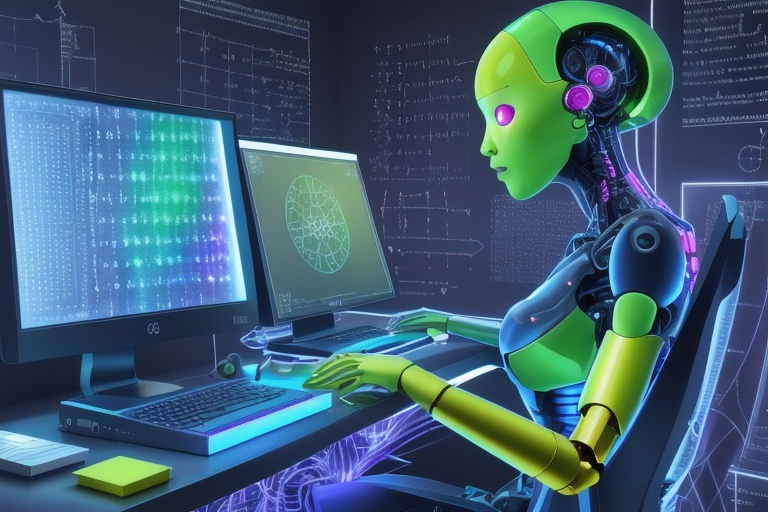Artificial Intelligence, commonly known as AI, has interwoven itself into the fabric of our daily lives with such intricacies that it often goes unnoticed. From the voice assistants that manage our schedules to the algorithms that suggest our next favorite TV show, AI operates silently yet significantly behind the scenes. As a constantly evolving field, AI's profound impact stretches across diverse industries, making it crucial to stay informed about the various nuances of AI that are sculpting our reality.
Artificial Intelligence, commonly known as AI, has interwoven itself into the fabric of our daily lives with such intricacies that it often goes unnoticed. From the voice assistants that manage our schedules to the algorithms that suggest our next favorite TV show, AI operates silently yet significantly behind the scenes. As a constantly evolving field, AI's profound impact stretches across diverse industries, making it crucial to stay informed about the various nuances of AI that are sculpting our reality.
This remarkable technology comes in several distinct forms, each with its unique capabilities and potential for future development. To better understand the transformative power of AI, let's delve into the four main types of AI: narrow AI, general AI, superintelligent AI, and artificial superintelligence.
Narrow AI: Specialized Problem-Solvers
Narrow AI, also referred to as 'Weak AI,' is specialized and adept at performing specific tasks. This form of AI is currently the most common and extensively used variety. Narrow AI constructs its expertise around a defined set of instructions, excelling in tasks such as facial recognition, language translation, and data analysis.
Examples of narrow AI are prominent in our everyday tech gadgets, like Apple's Siri and Amazon's Alexa. These assistants utilize narrow AI to interpret and respond to voice commands, playing music, setting reminders, or retrieving information from the web. Another instance is the AI behind the recommendation systems of Netflix or Amazon, which curate personalized suggestions based on past user behavior.
Despite its proficiency in certain domains, narrow AI does not possess understanding or consciousness. Its operations are purely based on programmed algorithms and learned patterns without any inherent cognitive functions. Nonetheless, the precise and efficient nature of narrow AI is instrumental in automating routine tasks and analyzing vast datasets, making it an invaluable asset in both research and industry.
General AI: As Versatile as Humans
General AI, in contrast, is a theoretical concept of a more advanced AI that can apply intelligence across a wide range of tasks, paralleling the versatility seen in human cognition. An AI with general intelligence would have the capacity to learn, reason, and apply knowledge in various contexts, much like a person.
While the realization of general AI remains a work in progress, it holds the promise of a future where machines could potentially perform any intellectual task that a human being can. This idea excites and concerns experts in equal measure due to the potential for autonomous problem-solving and decision-making without human intervention. When general AI advances to this level, it is expected to be a game-changer across every sector, from healthcare and education to transport and entertainment.
Superintelligent AI: Surpassing Human Intellect
Advancing a step further, superintelligent AI refers to a yet-to-be-developed form of AI that surpasses human intelligence in all aspects including creativity, general wisdom, and problem-solving. This level of AI proposes abilities beyond the most gifted human minds, posing questions about the implications of creating such powerful machines.
The concept of superintelligent AI often stirs debates around ethical considerations, safety, and control. As such an AI would outpace human intelligence, ensuring that its objectives align with human values and that it remains beneficial to society is a significant concern. Researchers are actively debating ways to align AI goals with human ethics, a challenge that gains complexity with the prowess of superintelligent AI.
Artificial Superintelligence: Merging AI with Amplified Abilities
Artificial superintelligence represents the pinnacle of AI evolution – machines that not only mimic but amplify human intelligence. This form of AI combines the capacity for learning, understanding, and experiencing the world in ways that exceed human capabilities.
The advent of artificial superintelligence could lead to groundbreaking developments in every field imaginable. Medical diagnostics, scientific discovery, and space exploration are a few areas that could witness exponential growth. However, with such advancements come profound responsibilities to guide their development responsibly and ensure they serve the greater good.
In essence, the landscape of AI is burgeoning with innovation and transformative potential. Each classification, from narrow AI to artificial superintelligence, presents different challenges and opportunities. As these technologies continue maturing and integrate even more into our daily routines, understanding the nuances and trajectories of AI will be key in navigating our future alongside these powerful tools.
Embracing AI technology responsibly and educatively will be crucial in harnessing its fullest potential while safeguarding human values and societal norms. As we stand at the cusp of these transformative changes, staying informed and engaged with AI's progress is essential for everyone.
Information for this article was gathered from the following source.


